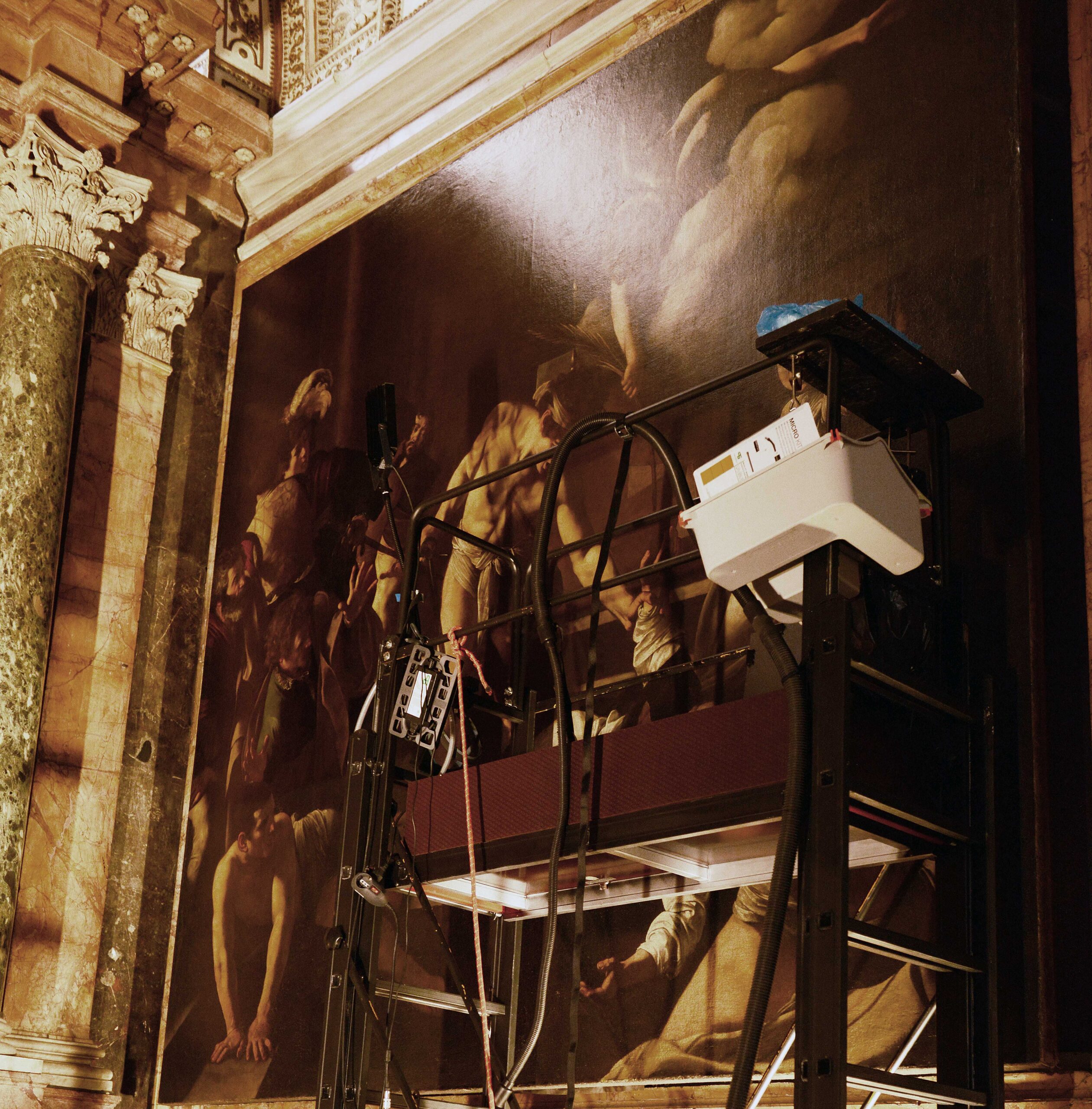Contemporaneously with his exhibition at the Nuovo Museo del Foro Romano “Un pittore olandese a Roma. Wessel Huisman e lo spazio generoso”, the Dutch artist Wessel Huisman (*1954) will exhibit several of his works at the KNIR. Our exhibition will focus on Huisman’s studies of light and perspective in famous paintings by Michelangelo Merisi da Caravaggio (1571-1610). You are cordially invited to the festive opening in the presence of the artist on 12 April at 5 PM.
In preparation for our exhibition with Huisman’s preparatory work for his studies after Caravaggio, we asked the painter to tell us a little more about his inspiration for the paintings that will be on show at the Institute.
This collection is the result of a decade of work. Could you tell us how this project came about?
During our first meeting in Florence in 2013, Professor Francesco Buranelli [former director of the Vatican museums, now president of the Permanent Commission for the Protection of the Historical and Artistic Monuments of the Holy See] posed to me the simple yet captivating question of how, as a Dutch painter with my specific treatment of light and space, I would depict the iconic sites of Rome. Now, in 2024, the moment has arrived to present the results of my research in Rome. The collection, based on photos I took during a series of walks with Buranelli through Rome in 2016, comprises 33 works inspired by historical locations, church interiors, and museums. During these walks, I was once again confronted with the work of Michelangelo Merisi da Caravaggio, simply known as Caravaggio, with whose work I was already extensively introduced during the opening of the retrospective exhibition at Kunstpalast/Düsseldorf in September 2006. What struck me particularly was the disconnect between the sublime paintings and the, in my opinion, superficial introductions by museum professionals, art historians, and representatives of local and national politics. It seemed to me that everyone was using Caravaggio’s work to advance their own agendas. At that moment, the desire arose in me to delve into his work and strip it of all irrelevant (art historical) embellishments.
So you approached Caravaggio’s paintings from a personal quest into Caravaggio’s own aims and objectives. In our exhibition at the KNIR, special attention will be devoted to your studies of the paintings in the Contarelli Chapel in San Luigi dei Francesi. Could you elaborate a little on how these relate to your intentions with this larger project?
While assembling the Roman collection, I initially chose to introduce Caravaggio in a contemporary context. When I visited Caravaggio’s Contarelli Chapel in San Luigi dei Francesi in 2016, the painting on the right [The Martyrdom of Saint Matthew, see below] was being restored. However, I gradually became more fascinated by the painting itself and its connection with the other two works in the chapel, which together depict three stages of the life of the apostle Matthew. Therefore, I decided to focus entirely on his paintings and analyze his representations of light and space from within. In other words, my studies are not loosely painted copies referencing Caravaggio’s final images. They are research reports in which, through painting, I attempt to understand Caravaggio’s decisions regarding composition, movement, and color choice.
This recent project fits in with other projects in which you studied artworks from very different periods and geographical areas. Do you see a connection between this project and earlier works in your oeuvre and also with your interest in history?
For decades, I have been pondering whether it is possible to create paintings with the spatial quality and thematic consistency that I experience in the works of Early Renaissance artists, in those of Vermeer, in some Impressionist works, or in woodcuts by nineteenth-century Japanese artists, without literally returning to classical techniques and images. This list may seem random, but it is certainly not. I have always sought constants in the evolution of the language of painting throughout the centuries. Here, the historian asserts himself. After years of observation and deliberation, I have discovered that over time, some painters have been able to imbue their work with an intriguing, abstract depth, independent of art historical periodization or criteria. This spatiality is not the result of perspective laws but arises from a delicate arrangement of visual elements. The result is a generous mental sensation that takes shape in the mind of the viewer. In this light, Etruscan tomb paintings are as valuable as fifteenth-century Italian frescoes, the work of some Russian Constructivists, or Chinese painters from the fourteenth century. It is this Generous Space that now takes shape in the context of this Roman series.
It seems you would like to demystify the work of the artist and strip away superficial layers of traditional art history, such as geographical and temporal boundaries, in order to delve deeper into the essence of the artwork itself. Is that a correct summary of your aim with this project?
Although I am aware of my Dutch roots, I do not work from that tradition for its own sake. My aim is precisely to nourish timeless cultural notions with my experiences and insights, thus giving them new meaning.
During the opening reception of the small exhibition of Wessel Huisman’s work, we will talk more with the artist about his aims, visions, and working methods. Please RSVP if you would like to attend: secretary@knir.it.

Caravaggio’s ‘The Martyrdom of Saint Matthew’ in the Contarelli Chapel in San Luigi dei Francesi, Rome, during restoration (photo: Wessel Huisman).
